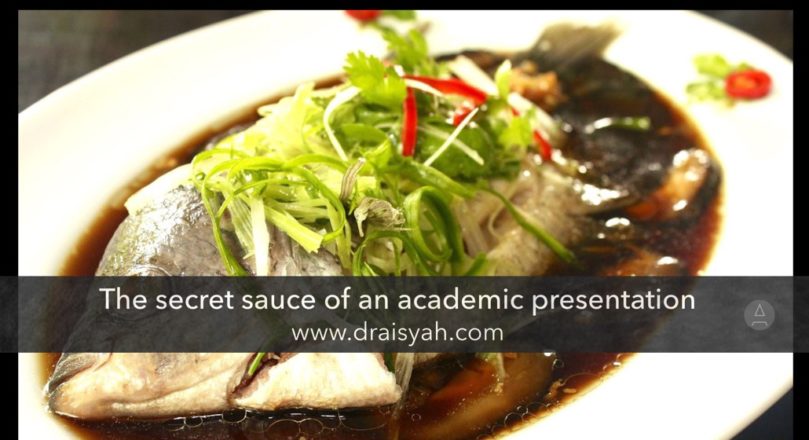Remember Toy Story, Wall-E and Finding Nemo? Great stories that children (and children-at-heart) love to watch again and again. They are listed in Pixar’s top 10 most successful animations. One key reason of Pixar’s continued success in the creative industry lies their story boarding. A story contains a storyline, an unseen structure that maps out the journey of the entire story (or a presentation). The secret sauce.
Skilled presenters and orators are great at using the invisible structures to capture and navigate their audience’s minds through a journey.
To educate. To inspire. To move people at their core.
What are the ‘flavours’ of your academic presentation?
In my post ‘How NOT to be boring’, I shared three takeaways to help you improve your academic presentations. The focus of this post is on storyline, the secret sauce of any great presentations. Somehow the secret sauce comes in several types and flavours. The question is, which one could I use for my academic presentation?
A delicious Masak Tiga Rasa (a Malaysian ‘3-flavour’ dish) has sweet, sour and spicy flavours. The flavours stimulate our taste buds in several ways. They awaken our senses. The dish takes you through a journey.
Whether it’s tomyam, steam ginger sauce. Your choice.
Similarly, a great story has 3 ‘flavours’ too: struggles, conflicts and resolutions. I’m sure your research has got all these ‘flavours’. But, bland food like mashed potatoes… erm, may not work in a story. Not enough spiciness! 😉
Dan Roam in ‘At the Back of a Napkin’ has categorised storylines into 4 convenient forms: Report, Explainer, Pitching and Drama. Check out the video.
Another great post at Visme shares 7 ways to structure your presentation. It is as follows:
Speak Visually. Create an infographic with Visme
How to make an academic presentation ‘taste’ awesome?
Many academic presentations follow a format that is not unlike a thesis structure. If a thesis structure is a food, it’s bland and tasteless.
The challenge is how to convert a bland, report-like structure into a story that is more interesting and captivating during your proposal presentation? Or at a research seminar? Which one out of the seven structures can I use?
My suggestion, examine your research journey, your intention and the aim of the presentation. Simply informing the panel of your research progress can be boring. Are there any conflicts or struggles worth sharing? Also, do include options you have considered and resolution(s) taken. Bring out those ‘flavours’ like a chef.
Consider Structure No. 7. Hook them early and show them the map of your story. Get them on your side before ending your presentation with a call to action. This could be used for a presentation on research progress or grant extension.
One part we always forget is the panelists. Put yourself in their shoes. Remember, the panelists might have seen like 20 presentations that day. And yours is so happen to be the last one. At 6.30 pm. They are probably tired, grumpy and need a shower.
So, make it easy and interesting for them. Create a memorable presentation 😉 And please, no MSG. Make the secret sauce original and authentic. From your heart.
Good luck!







Comments are closed.